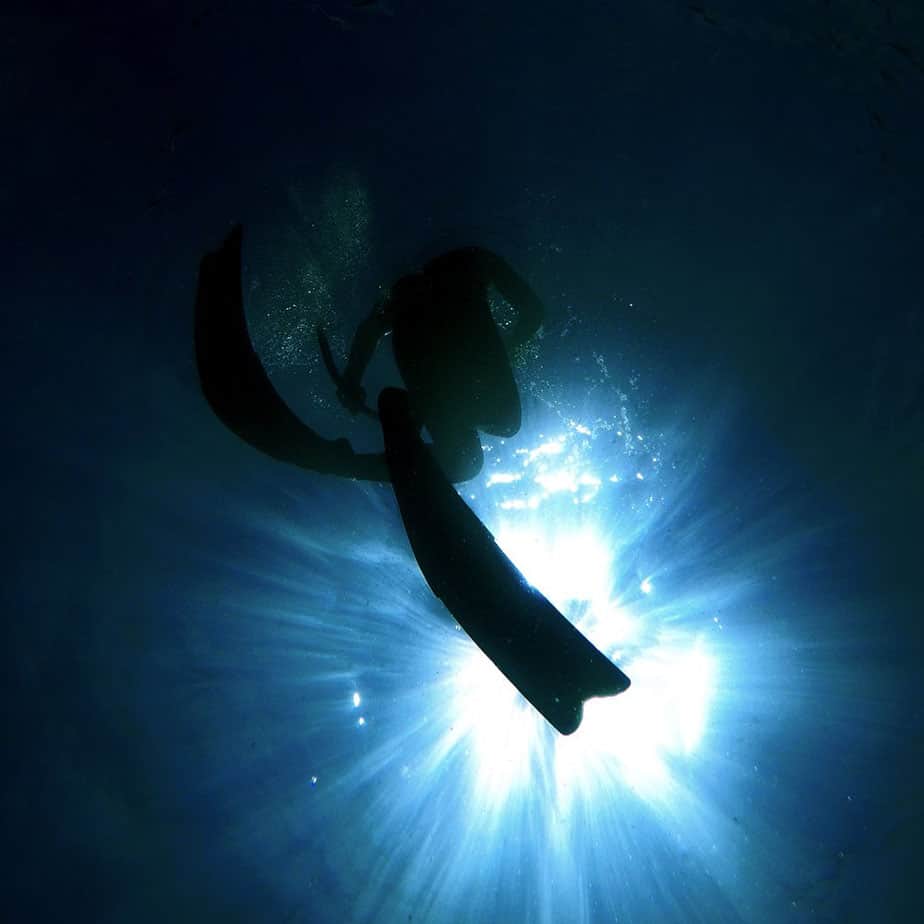Despite using similar equipment, snorkeling and freediving could not be more different. Snorkeling is best done at a leisurely pace, where one can relax at the surface of the water and just take in the sights. Freediving is much more intense, with divers pushing the limits of their endurance and breath-holding capability. Then there’s skin diving, which is like a hybrid of the two where a snorkeler will occasionally dive to explore the aquatic world up close.
All of these activities are great ways for one to explore the underwater world. If you’re a beginner, you should stick with snorkeling before moving onto skin diving and maybe one day you can try your hand at freediving. They are all enjoyable in their own way, but freediving requires lots of training and is much riskier than snorkeling.
In this article we will discuss how freediving and snorkeling compare to each other, their similarities and differences, and which one is the right choice for you.
What is snorkeling?
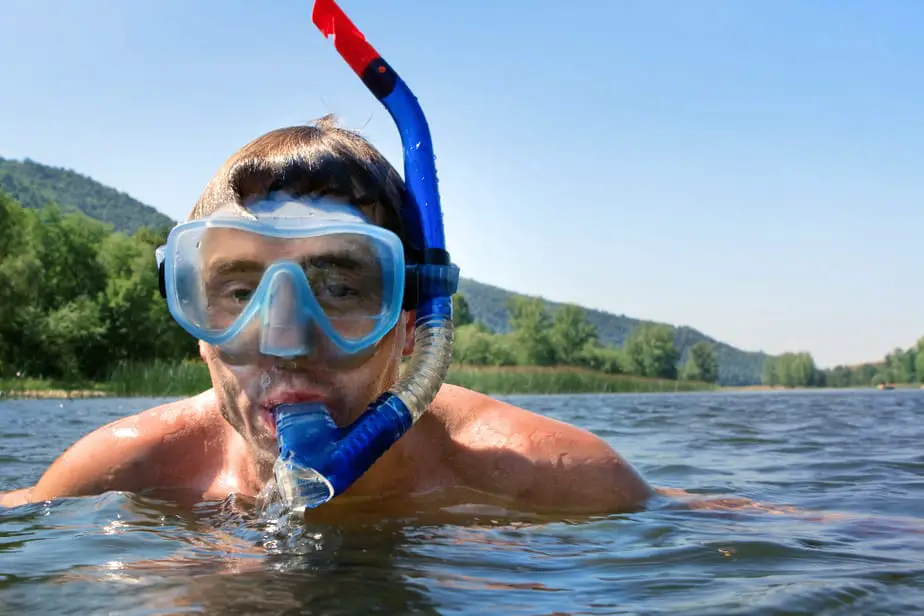
Snorkeling is when you float at the surface of the water with a mask and breathe through a snorkel while observing the beautiful aquatic life beneath. It is a casual and leisurely activity that almost anyone can do. It does not require much training other than knowledge of some basic swimming skills. Technically, you don’t even need to know how to swim if you’re wearing a life jacket, though knowing how to swim is highly recommended..
While snorkelers may sometimes do a quick dive to get a closer look at something in shallow depths, they mostly spend their time observing by the surface. It’s really simple to get started with snorkeling. All one really needs for gear are a pair of short fins, a mask, and a snorkel. If you want to get started with exploring the underwater world, snorkeling is a fantastic starting point that is cheap and requires minimal investment.
What is freediving?
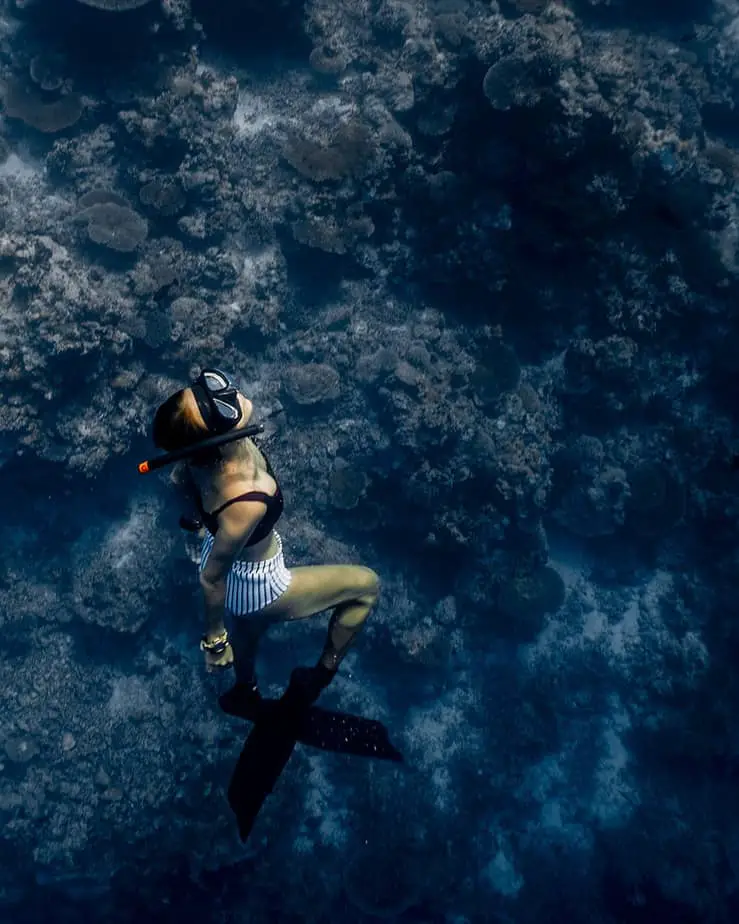
Freediving is when a diver holds their breath and dives down without bringing an oxygen source with them, unlike scuba diving. Advanced freedivers are capable of holding their breath for several minutes and diving for dozens of feet, holding their entire breath the entire time, before surfacing.
The goal of freediving and snorkeling are drastically different. Freedivers are trying to dive vertically down to set a new depth or apnea record. They are a competitive bunch that are striving to push past their limits. Snorkeling on the other hand, is a relaxed, leisurely activity suitable for beginners.
As you can imagine, due to how intense and risky freediving is, not everyone can or should do it. You don’t want to attempt to freedive with no idea what you are doing and end up as a statistic. Freediving requires extensive training in order to do properly, and one should take freediving lessons to receive proper instruction.
Freediving vs. skin diving
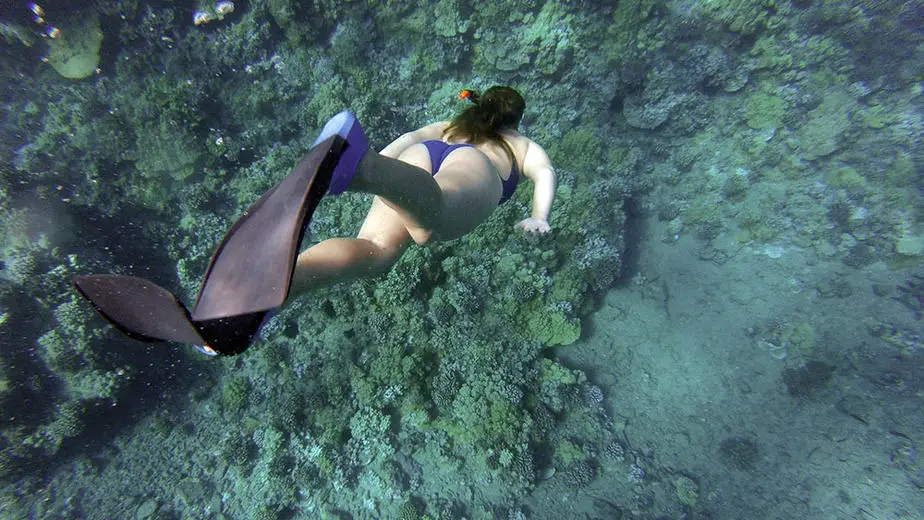
Think of skin diving as a hybrid between snorkeling and freediving.
While snorkeling, have you ever seen something interesting below you and decided to dive down to get a closer look at it? If you dive down to it, then you have skin dived. While this sounds somewhat similar to freediving, the objectives are completely different. Freediving is a more competitive sport where the divers are swimming vertically to achieve a new depth or apnea record.
Skin diving is just a fancy way to refer to advanced snorkelers who are willing to get more involved by occasionally diving down instead of always staying at the surface. This is still very much a recreational activity because it is done for exploration and leisure purposes. However, skin diving does require solid breath-hold and swimming ability to be able to do well.
Equipment
Freedivers
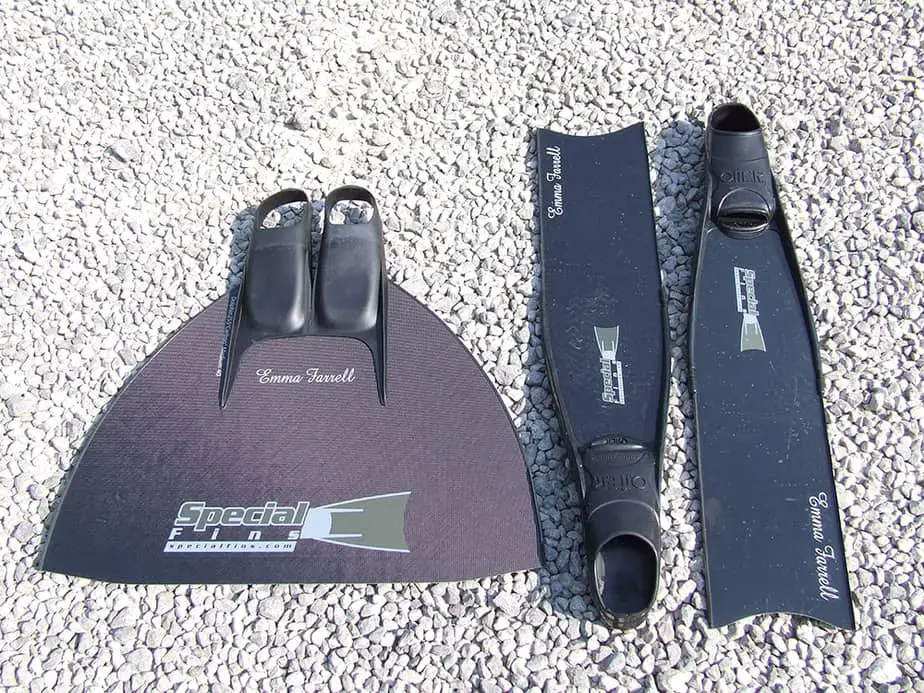
What freedivers and snorkelers need for their equipment will seem similar, however there are some distinct differences. Freedivers need a pair of long fins, a mask (preferably a low volume one), and a snorkel. The long fins are necessary because it helps to displace more water per kick, resulting in superior propulsion.
Freediving fins are made of either plastic, fiberglass, or pure carbon, and each material is important to consider because their propulsion varies. The lighter the material is, the better, though some freedivers don’t even wear fins if they are training for the CNF (Constant Weight No Fins) category.
A freediver might also decide to use a mono-fin instead of a pair of fins. A mono-fin mimics the shape of a fish’s tail and is one large fin that a freediver puts both feet into. It can generate large amounts of propulsion and is most often used by advanced divers or swimmers.
At the surface, a freediver should be using a snorkel and surface marker buoy (SMB) with line. The snorkel can help freedivers breathe comfortably and steadily at the surface during rough water conditions. It helps them conserve some energy and lets them view the underwater conditions. Before a dive, they can stow the snorkel in the SMB pocket and retrieve it when they need it. To track your dive depth or apnea time, you can use a dive computer with a freediving mode.
Some optional equipment are a wetsuit, diving socks, gloves, a weight belt, and dive weights. Freedivers training for depth should wear a wetsuit and use dive weights. Wetsuits are buoyant so freedivers must counterbalance the positive buoyancy with some weights. How thick the wetsuit is affects its buoyancy; the thicker it is, the more buoyant.
The quality of the mask is also very important, and it should preferably be low volume. Low volume masks trap less air inside compared to a high volume one. Since air is positively buoyant, less air means less buoyancy and less dive weights needed. Furthermore, less air is needed to equalize the space in the mask. The mask will squeeze against the face as one dives deeper, so remember to equalize.
Snorkelers
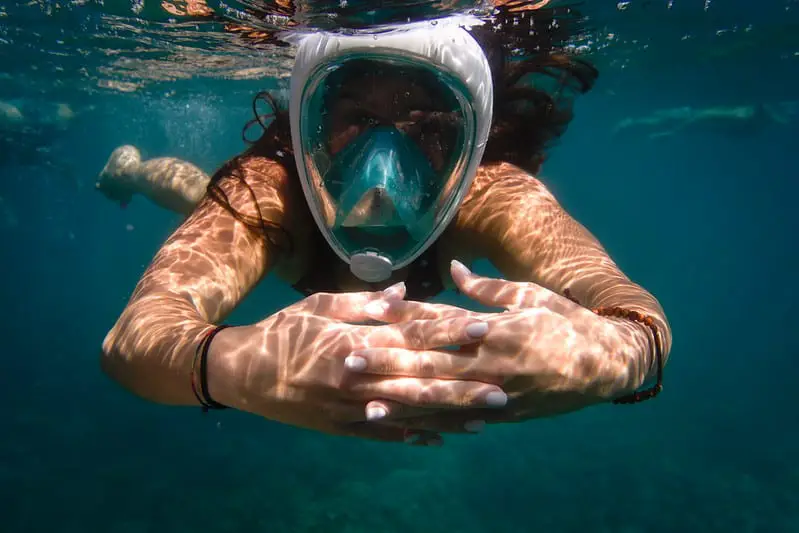
Snorkelers wear similar gear – a mask, snorkel, and fins as well. They may also wear a rashguard or wetsuit for sun protection as well as a snorkel vest, flotation belt, or life jacket to help them stay afloat and conserve energy. Snorkeling fins do not have to be as long, and snorkelers can get short fins which are much easier to pack for travel.
Rather than purchasing a separate mask and snorkel, snorkelers have the option of getting a full face snorkel mask which combines the mask and snorkel into one product. The advantage of a full face mask is that it doesn’t require a snorkel mouthpiece and users can choose to breathe from either their nose or mouth, instead of just the mouth. Full face masks have a kid’s version which is great for kids who struggle with breathing through their mouth.
While there is some controversy regarding the safety of a full face mask, after an investigation was done, the conclusion is that full face masks are no more dangerous than any other snorkel and mask setup.
As you can see, while there is some overlap between snorkeling and freediving gear, the way they are intended to be used is drastically different. Furthermore, freedivers do want to use any sort of flotation device since they do not want to be positively buoyant during a dive, whereas snorkelers use it so they can float by the surface without spending any energy.
Training
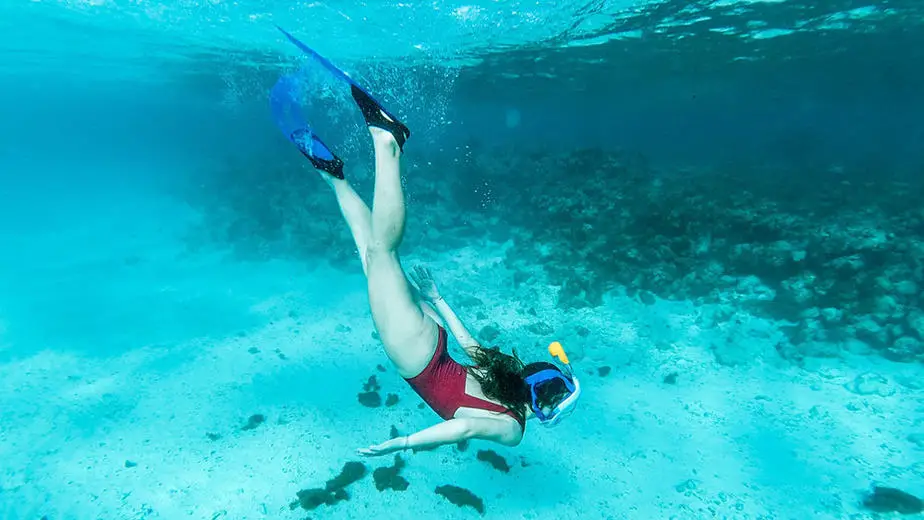
Snorkeling requires basically no training and almost anyone can do it. This makes it a great family-friendly activity for everyone to enjoy during a vacation at a tropical destination. Knowing how to swim is highly recommended for all water activities, snorkeling included. Furthermore, it would be prudent for one to read some snorkeling guides to learn the basics, such as what equipment to get and how to use them.
Freediving, being the more competitive and risky sport between these two disciplines, requires some lessons in order to learn the basics. At a minimum, they should at least take the SSI Level 1 course or the AIDA Level 1 and 2 courses to get a freediving certification. There are even higher level courses if you wish to improve your skills further.
In order to be a successful freediver, you must not only be in good physical shape, but also possess a calm disposition. You must train your endurance, breath-hold capability, and mental fortitude to be able to dive where most humans wouldn’t dare on a single breath. It’s not uncommon for freedivers to learn how to meditate or reach a zen-like state so that they can stay calm as they dive deeper towards the depths.
You’ll also need to learn how to equalize your ears using various equalization techniques. If you don’t equalize your ears, your ears will start hurting due to the increased pressure. Unlike scuba divers who can equalize their ears by pinching their nose and blowing, freedivers don’t have that luxury because it puts them at a disadvantageous position and wastes energy. They need to learn how to do hands-free equalization so they can keep descending without any impediments.
The reason why mental training is as crucial for freedivers as physical training is that freediving is inherently panic-inducing. Imagine being dozens of meters underwater and wondering if you have enough air remaining for the ascent. Being anxious increases a freediver’s heart rate which increases oxygen consumption which limits their bottom time. They must train themselves to remain calm and composed because it serves them no good to be afraid.
Dangers and risks
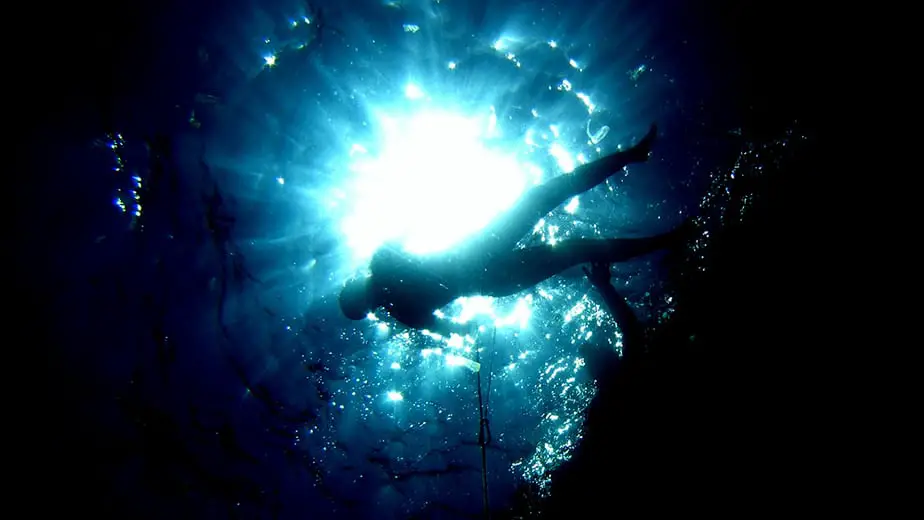
Snorkeling
Out of these two sports, snorkeling is by far the safer option. It’s done on the surface where it’s easy to get a breath of fresh air if needed, and most snorkelers will be wearing some kind of flotation device so they don’t even have to worry about staying afloat.
With that said, snorkeling is not without its risks. Being a water activity, there is always the inherent risk of drowning. Non-swimmers should always wear a life jacket. Even confident swimmers should be wearing a flotation device anyways. It not only helps you conserve your energy, but you’ll be glad you were wearing it if a riptide suddenly pulls you hundreds of feet out into the ocean.
Snorkelers should also be aware of their surroundings. It’s really easy to get distracted while you’re focused on what’s beneath you that you end up swimming far away from the group. Furthermore, unless your equipment is highly visible, there is a possibility that boats may not see you and a collision of any sort is deadly.
Freediving
For freedivers, the biggest risk is misjudging how much air you have left or suddenly blacking out near the surface. That is why you should not disregard your body’s contractions because it is a sign that you are almost out of oxygen. If you lose consciousness underwater then you are almost certainly a goner. For this reason, just like with scuba diving, you should always dive with a buddy.
Freedivers are also at risk of getting hit by boats, which is why they use a surface marker buoy to mark the location where they will surface. Boats should steer clear from SMBs, and you should make sure your SMB is highly visible so that they can see it.
While freedivers are generally safe from decompression sickness and lung barotrauma, they can still get bent if they perform too many dives back-to-back with insufficient surface intervals between them. A general rule of thumb is to rest three times as long as the most recent dive to give your body time to decompress. Freedivers that dive for hours can actually experience the effects of DCS which can be deadly.
Lastly, you might have heard of something called “the bends” affect scuba divers who ascend rapidly. Should snorkelers and freedivers be wary of it as well, since they also dive under water and ascend rapidly? We have written an article on this topic, but the conclusion is: No, decompression sickness/the bends is not a risk factor for snorkelers and freedivers.
You might also be interested in reading our articles on scuba diving vs. freediving and scuba diving vs. snorkeling.

